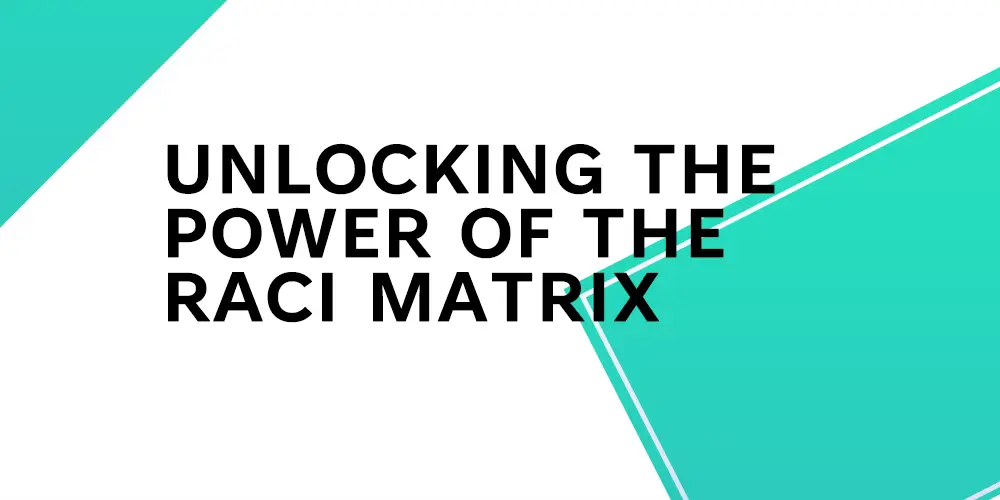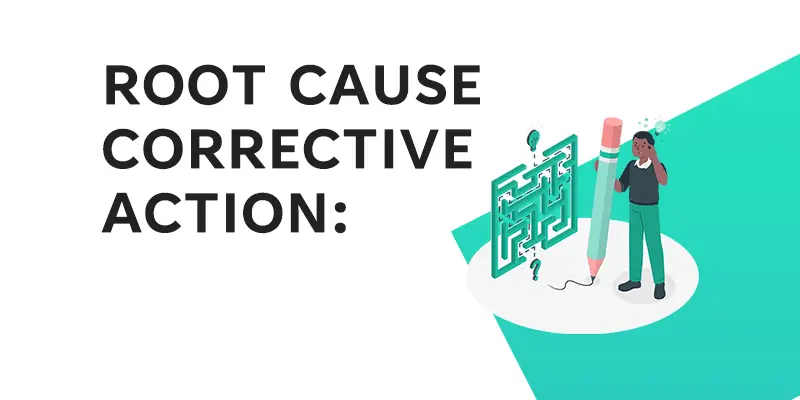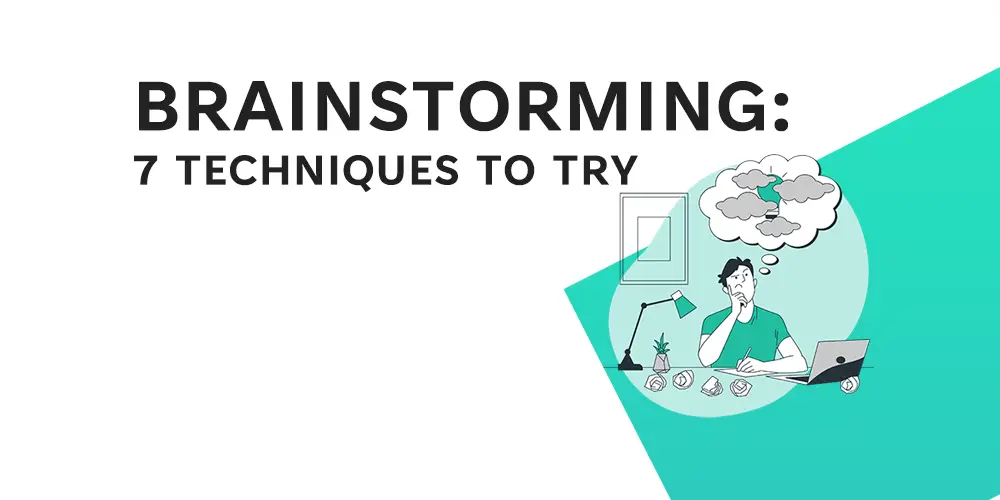Are you tired of team members stepping on each other’s toes, or are you confused who is in charge of what? Do you continually try to define roles and duties but still struggle to keep everyone on the same page? Take a look at the RACI matrix!
This effective tool aids in the streamlining and simplification of team relationships, providing everyone with a clear grasp of their roles and duties and driving results. In this post, we’ll look at the RACI matrix’s benefits and teach you how to use it in your own team. Whether you’re in charge of a project or a department, the RACI matrix is a game changer for increasing communication and productivity. So, if you’re ready to take your team to the next level, continue reading.
If you are looking to download a Free RACI Matrix Template: Click here
Understanding the RACI Matrix

The RACI matrix is a straightforward yet effective method for organizing and defining team roles and responsibilities. It is made up of four important roles: responsible, accountable, consultative, and informed.
The RACI matrix is a straightforward yet effective method for organizing and defining team roles and responsibilities. It is made up of four important roles: responsible, accountable, consultative, and informed.
Responsible: This person is the one who physically performs the task or action. The team’s “doers” are them.
Accountable: This person is ultimately responsible for the task’s or action’s success or failure. They are the ones who must answer for the consequence.
Consulted: These are the individuals who have been consulted or who are required to provide feedback for the task or action. They may not be actively involved in the implementation, but their feedback is valuable.
Informed: These are the people who need to be kept in the loop or informed about the task or action, but do not necessarily need to be involved in the decision-making process.
In a project to launch a new product, for example, the project manager may be held accountable for the project’s overall success, the product development team may be in charge of designing and building the product, the marketing team may be consulted for feedback on the product’s messaging and positioning, and the sales team may be informed of the launch date and details.
It is crucial to note that while one person may complete numerous functions in the matrix, it is critical to distinguish who is responsible and accountable for the final output.
The RACI matrix can help to avoid confusion and role overlap in a team context, as well as guarantee that everyone understands their unique tasks and how they fit into the larger picture. It also helps to guarantee that all stakeholders are kept informed and that key decisions are taken by the appropriate individuals.
Teams may improve communication, boost accountability, and ultimately generate greater results by knowing and implementing the RACI matrix.
Implementing the RACI Matrix
Implementing the RACI matrix may appear difficult at first, but with a clear grasp of the process and some best practices, it is simple.
The following are the steps for building a RACI matrix for a given project or task:
- Determine the tasks or actions that must be completed within the project or job.
- Determine who the primary stakeholders and team members are for the project or assignment.
- Assign each task or action, as well as the related team members, the roles (Responsible, Accountable, Consulted, and Informed).
- Review and complete the matrix with key stakeholders to ensure that everyone is aware of their respective roles and responsibilities.
Tips for communicating the RACI matrix to team members effectively:
- Explain to the team the objective and benefits of the matrix.
- Give clear examples of how the matrix will be used in the project or job.
- During the implementation process, encourage team members to ask questions and provide comments.
- Hold regular meetings to assess the matrix and update it as needed.
The following are the best practices for maintaining and upgrading the RACI matrix throughout the project or task:
- Maintain the matrix in a visible and accessible location for all team members.
- As the project or task continues and roles and responsibilities change, evaluate and update the matrix on a regular basis.
- Use the matrix to help you make decisions and solve problems.
- Hold team members accountable for the duties and obligations that have been given to them.
Teams may effectively apply the RACI matrix and use it as a powerful tool to improve communication, boost accountability, and generate improved results by following these steps and best practices.
Examples
The RACI matrix is a versatile tool that may be applied to a wide range of industries and project types. Here are a few examples of how the RACI matrix can be used in practice:
- A RACI matrix can be used in the construction industry to organize and define roles and responsibilities on a building project. For example, the project manager would be held accountable for the overall success of the project, the architects and engineers would be in charge of designing the structure, the contractors would be in charge of building the structure, and the client would be kept informed and consult on the project’s progress.
- A RACI matrix can be used to oversee the development and launch of a new software product in the software development business. The product manager would be held accountable for the product’s overall performance, the development team would be in charge of constructing the software, the quality assurance team would be consulted on software testing, and the sales team would be informed of the launch date and information.
- A RACI matrix can be used to oversee the adoption of a new electronic medical record system in the healthcare business. The project manager would be held accountable for the overall success of the project, the IT department would be in charge of implementing the new system, the clinical staff would be advised on the usability and functionality of the new system, and the administrative staff would be kept up to date on the project’s progress.
These are just a few examples of how the RACI matrix might be applied in various sectors and project kinds. The goal is to understand the project’s or task’s specific demands and stakeholders, and then use the RACI matrix accordingly.
There are also numerous success stories of teams that have improved their performance by using the RACI matrix. Here are a couple such examples:
- After using the matrix, a manufacturing company noticed an increase in productivity and a decrease in errors.
- The matrix was utilised by a marketing team to improve communication and collaboration, resulting in a successful product launch.
- The matrix was employed on a building project to define roles and duties, which resulted in fewer delays and cost overruns.
These examples show how the matrix may be used to improve team communication, increase accountability, and drive better results. Understanding the RACI matrix allows teams to streamline their operations, boost overall performance, and achieve their objectives.
Conclusion
To conclude, the RACI matrix is an effective tool for organizing and defining team roles and responsibilities. It reduces misunderstanding and role overlap by ensuring that everyone understands their unique responsibilities and how they fit into the larger vision. The RACI matrix may be used to a wide range of sectors and project types, and it has been shown to improve communication, promote accountability, and drive better results.
We’ve explained the benefits of the RACI matrix and demonstrated how to use it in your own team in this blog article. We’ve also provided real-world examples of how the RACI matrix has been utilized to boost team performance in other industries.
The essential message is that the RACI matrix is a simple yet effective tool that may assist teams in streamlining operations, improving overall performance, and meeting their objectives. We invite you to implement the RACI matrix in your own team and witness the beneficial influence it may have on your team’s performance.
The RACI matrix is a strong tool for simplifying team dynamics, providing everyone with a clear grasp of their roles and responsibilities, and driving results. It is simple to use and may be applied to a variety of applications and businesses. Teams may improve communication, boost accountability, and ultimately generate greater results by knowing and implementing the RACI matrix.








